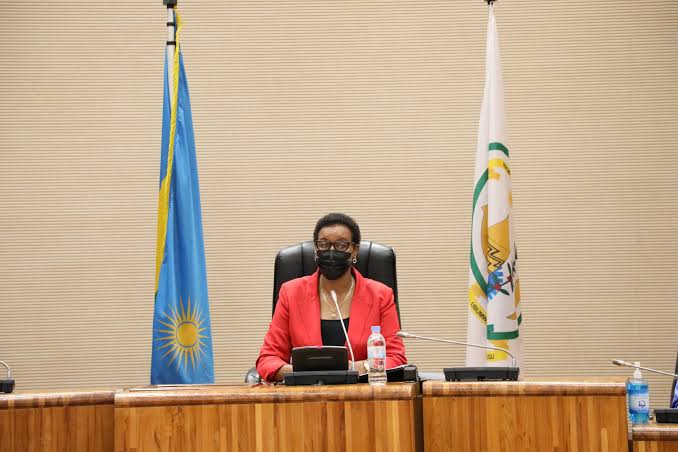Parliament has requested government through the Ministry of Health to show to it, within six months, the road map to address the shortage of ambulances by prioritising the health centres that are far from district and advanced-level hospitals.
The move is in line with addressing the current situation where healthcare to patients, including pregnant mothers, is delayed because of the current shortage.
Also, lawmakers wanted the Ministry to show a plan to replace old ambulances, and provide the required equipment to those that do not have it.
The Chamber of Deputies’ plenary sitting made that resolution on Thursday, as it adopted the report of its Committee on Social Affairs about the assessment it carried out on the Auditor General’s report on the Management of Emergency Obstetrical & Neonatal Care (EmONC).
The audit covered public health facilities and the period from July 2017 to June 2021.
MP Odette Uwamariya, Chairperson of the Committee on Social Affairs, said that while analysing the above-mentioned report by the Auditor General, MPs realised that the Government achieved the target on the health infrastructures such as the number of health facilities with the required equipment.
However, she said that there are still issues that need attention.
“One of those issues is the delay in transferring to hospitals pregnant mothers who need to give birth through cesarean section because they could not give birth normally. This issue is caused by ambulance shortage,” she said.
According to MPs, while there should be one ambulance per a health centre, the assessment they carried out indicated that one ambulance was being shared by three health centres.
Uwamariya said that the identified challenge was that the number of ambulances was small compared to Rwanda’s population needs. However, she indicated that the Committee Members held discussions with the Ministry of Health and found that it was working to deal with the problem.
“The Government had a target that in 2024, we should have at least one ambulance per 40,000 people. When we were holding talks with the Ministry in charge [of Health], it was realised that we had 285 ambulances until September 2022, while we should have at least 328 ambulances based on the target,” she said.
Given that Rwanda’s population is estimated at 13 million, there was one ambulance per 45,600 people in the country.
Even of the existing ambulances, MPs said that some were old, while others did not have the required equipment.
Meanwhile, Uwamariya said that the Ministry of Health told lawmakers it was working with the members of the private sector engaged in the health zone, so that they can contribute to solving the issue.
This, she indicated, could be done through purchasing the needed ambulances, replacing the old ones, and equipping those that are not so as to improve the transport of pregnant mothers to hospitals for advanced treatment.
MP Jean Pierre Hindura said that having enough ambulances and ensuring smooth and rapid transport of patients to health facilities is a demanding action.
In some cases, he said, roads are in poor conditions or even those that are impassable during the rainy season, which can lead to a situation where even the available ambulances cannot manage to take patients to given health facilities.
“This is an issue that does not concern the Ministry of Health alone, but also others including the Ministry of Infrastructure and the Ministry of Finance and Economic Planning so that the wider access to ambulances be achieved,” he said, citing the need for the availability of the required budget, roads to ease movement, among other requirements.




